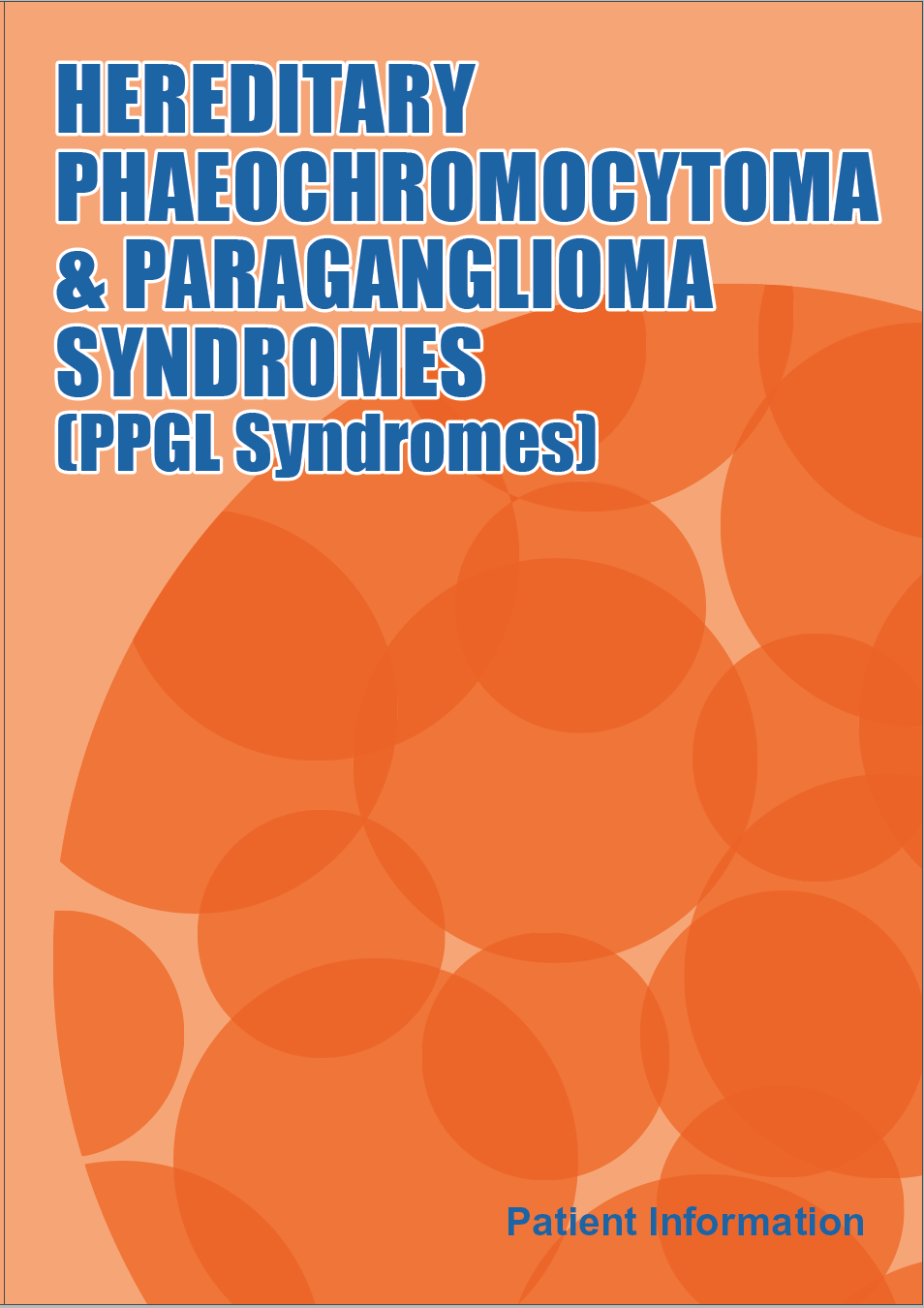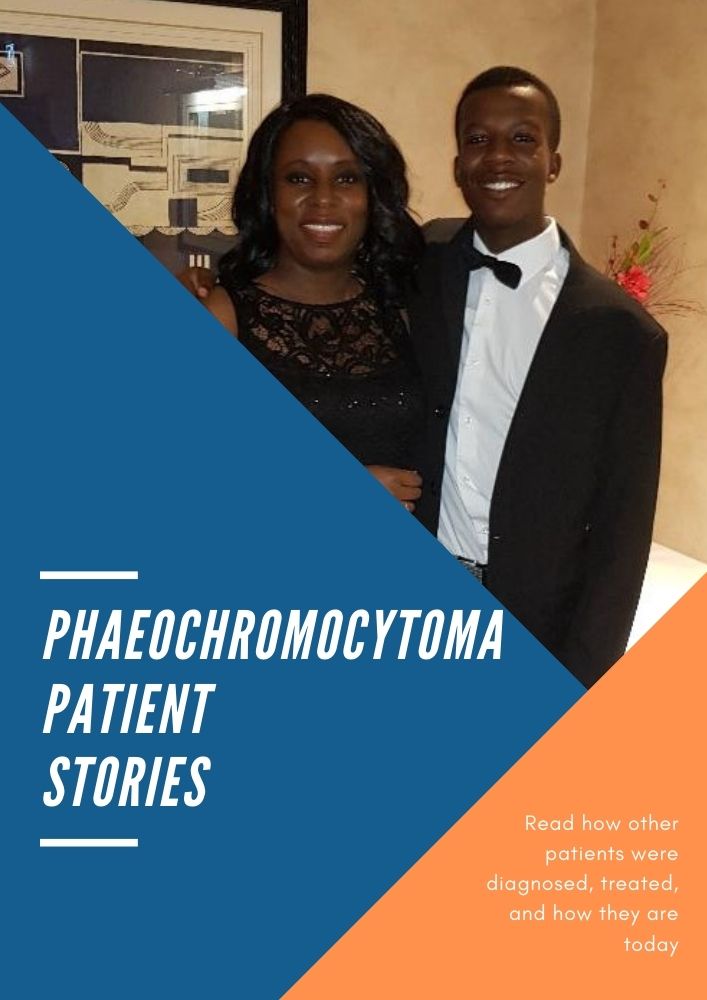What are Phaeochromocytomas & Paragangliomas?
Phaeochromoytomas (pheochromocytomas), often known as ‘phaeos’ (‘fee-ohs’), are rare tumours of the adrenal gland which develop in the inner section of the gland called the medulla.
Paragangliomas (extra-adrenal paragangliomas) are similar tumours to phaeochromocytomas but can arise from sites other than the adrenal gland.
-
 Adrenal glands sit on top of the kidneys
Adrenal glands sit on top of the kidneys -
 Paragangliomas and their possible locations
Paragangliomas and their possible locations
The body has two walnut-sized adrenal glands, sitting on top of each of the kidneys (‘adrenal’ means next to the kidney). Even though the glands are small they are important as they produce several essential hormones. The medulla (the area of the adrenal gland from which phaeos arise) produces a number of hormones called catecholamines, mainly adrenaline (epinephrine) and noradrenaline (norepinephrine). These hormones help the body deal with maintaining blood pressure, deal with sudden stress or threats. Phaeochromocytomas and paragangliomas may produce excessive amounts of these hormones, causing a variety of symptoms that can affect the whole body.
What is known about these tumours?
- This type of tumour is rare occurring in 1 per 100 000 people per year
- The majority (approximately 90% or 9 out of 10) are benign tumours (i.e. not cancer)
- Over 80% (8 in 10 cases) arise in the adrenal glands
- The most common age for diagnosis is between the ages of 30-60 years of age, although 10% arise in children
- There is no sex difference or racial disposition
- Tumours occurring in children are more likely to be related to an inherited condition than those occurring in adults
Is there a genetic link?
- The majority of these tumours are not linked to a genetic condition and are therefore known as ‘sporadic’ tumours
- Approximately 25% (1 in 4 cases) are related to inheriting a gene change which leads to an increased risk of developing phaeochromocytoma
- The inherited forms can occur in syndromes, including multiple endocrine neoplasia 2 (MEN2), neurofibromatosis (NF) and von-hippel lindau syndrome (VHL)
- There are families who develop phaeos with paragangliomas due to a change in one of several different genes. Learn more about hereditary PPGL disorders
What are the symptoms of these tumours?
Phaeos and paraganglioms can cause a wide variety of symptoms which are mainly related to the release by the tumour of excessive amounts of hormone, mainly adrenaline and noradrenaline. Symptoms can occur intermittently often in episodes lasting only 15 minutes and may include some or all of the following:
- Headaches
- Dizziness
- Facial paleness (pallor)
- Excessive sweating
- Racing heart rate (palpitations)
- Panic attacks/ sense of doom
- Anxiety
- Weight loss
- Heat intolerance
- High (and rarely low) blood pressure (sustained or episodic)
- Nausea (with or without vomiting)
- Breathlessness
- Depression
- Lethargy
Many of the symptoms listed above are related to the high blood pressure (hypertension) that can be caused due to this condition. It is thought one case of hypertension in every 1000-2000 patients is due to phaeochromocytoma. Hypertension in patients with undiagnosed phaeos can be very difficult to control; however, once a diagnosis is made, special drugs are available to help to control it.
Further Reading
AMEND has developed a new group identity for those with PPGL syndromes (Phaeo Para Support UK) including a dedicated website (www.phaeoparasupport.org.uk) that was launched on 24th August 2020. You will find dedicated resources there including patient experience stories.
For further detailed information on Phaeochromocytomas and Hereditary Phaeo Para Syndromes, please read the AMEND patient information booklets below:
-
Phaeochromotyomas

2023 Update. We recommend that you discuss the content of this booklet with your specialist - it is not for use in self-diagnosis, and not all of the information it contains may be relevant to you.
View Booklet
-
Inherited Phaeo Para Syndromes

PATIENT STORIES
-
PATIENT STORIES

A number of our members have written about their journeys with phaeochromocytomas to help inform and perhaps also inspire others.
Click here to read more
-
MY STORY TEMPLATE

Want to write your own story but don't know where to start? Use our handy template for inspiration! Just scan and send by email or pop it in the post.
Click here to download
Author: Jo Grey, AMEND CEO, with the help of the AMEND Medical Advisory Team
References and Information Production
Be involved
-
Make a donation
AMEND has a variety of ways to donate to show your appreciation for our work.
Donate now
-
Become an AMEND member
Membership is free so come and join our family
Join us
-
Latest News
AMEND is pleased to bring you our latest publication: ‘Starting a Family: Your Choices’. Funded by a grant from the Society for Endocrinology, this…
View News